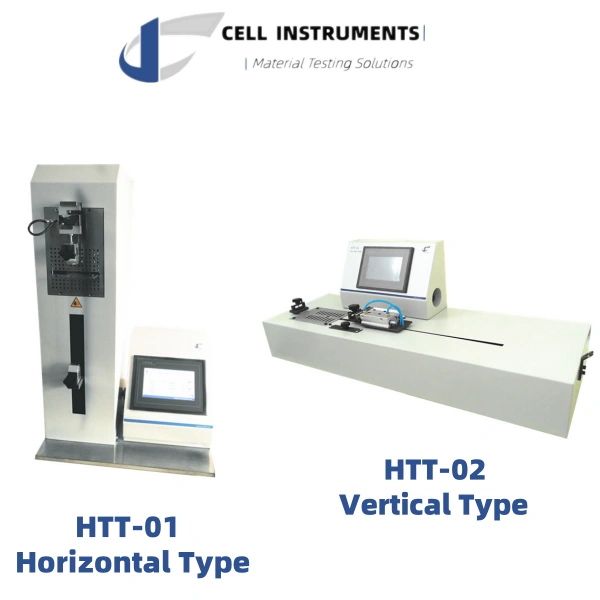Pasta Packaging and Its Importance
Pasta pacakging plays a crucial role in preserving the freshness, shelf life, and safety of the product. As a food item sensitive to moisture, oxygen, and mechanical damage, pasta requires packaging materials that not only provide excellent barrier properties but also form strong, reliable seals—especially during 成型-填充-密封 operations. In these processes, the 熱黏強度 of the sealing material becomes critical, as it determines the seal’s ability to hold while still hot, preventing premature failure during packaging.
For manufacturers and quality control professionals, evaluating hot tack performance according to ASTM F1921 is essential for optimizing packaging material choices and ensuring production efficiency. This article offers a professional, practical guide to performing hot tack testing on pasta packaging films using ASTM F1921.
Understanding Hot Tack Strength in Pasta Packaging
Hot tack strength refers to the seal strength of a packaging film while it is still hot, immediately after sealing and before it has cooled and crystallized. This property is especially important for pasta packaging films used in high-speed vertical and horizontal form-fill-seal machines, where premature seal failure can result in product loss, machine downtime, and customer complaints.
Inadequate 熱黏強度 can cause seals to open under the stress of product drop or mechanical handling. Evaluating this characteristic allows packaging engineers to select or adjust materials and sealing parameters that improve packaging integrity.
Hot Tack Test Procedure Based on ASTM F1921
To accurately assess 熱黏強度, ASTM F1921 specifies a standardized 熱黏性測試 procedure using specialized testing equipment. The Cell Instruments Hot Tack Tester is designed specifically to perform this test with high precision, offering automatic control of all essential parameters.
Key steps in ASTM F1921 testing include:
- Seal Formation: Two film strips are sealed using heated jaws under controlled temperature, pressure, and dwell time.
- Seal Retraction and Testing: Immediately after sealing, the jaws open, and grips pull the sealed strips apart. The machine measures the peak force required to separate the seal while it is still hot.
- Temperature Ramping: Testing is performed at various sealing temperatures (typically in 5°C to 10°C increments) to develop a complete hot tack curve.
- Failure Mode Recording: The type of failure (peel, cohesive, delamination, etc.) is visually observed and recorded for each specimen.
ASTM F1921 defines two main methods:
- 方法A(固定延遲): Measures hot tack strength at multiple preset cooling times after sealing.
- 方法 B(可變延遲): Reports maximum force after a user-defined delay time.
Each approach offers insights into how the material performs under different packaging line conditions.
Why Hot Tack Testing Is Critical for Pasta Packaging
這 成型-填充-密封 process for pasta is fast-paced. Immediately after the seal is made, the bag may be filled, moved, or dropped. The seal must resist breaking while still cooling. This is where hot tack performance becomes essential:
- Prevents seal failure during fast mechanical handling.
- Supports high-speed automation without compromising seal integrity.
- Ensures product containment, maintaining hygiene and brand trust.
Materials such as BOPP/CPP, metallized films, and co-extruded laminates used in pasta packaging can show different hot tack behaviors. Evaluating them under simulated packaging conditions improves confidence in their application.
Choosing the Right Testing Equipment
For reliable and repeatable hot tack testing, equipment must meet ASTM F1921 specifications. The Hot Tack Tester from Cell Instruments is equipped with:
- Dual heated jaws with precise temperature control
- Adjustable sealing time and pressure settings
- Automated withdrawal and pull testing cycles
- Real-time measurement and graphical hot tack curve output
- Compatible with both Method A and Method B
With these features, Cell Instruments’ solution ensures compliance, consistency, and confidence in your pasta packaging material evaluation.
Improving Packaging Efficiency Through Data
Performing the 熱黏性測試 on various films allows packaging professionals to:
- Optimize sealing parameters to reduce reject rates
- Compare material suppliers for performance benchmarking
- Develop new laminates tailored for pasta packaging applications
- Ensure ASTM F1921 compliance during quality assurance
Analyzing 熱黏強度 trends across temperature curves can reveal the ideal sealing window for production. Combined with peel strength 和 seal integrity tests, it gives a complete picture of seal performance.
Hot Tack Testing Secures Pasta Packaging Success
Evaluating 熱黏強度 as per ASTM F1921 is a best practice for any manufacturer serious about pasta packaging quality. It ensures seals hold under stress, reducing waste and increasing consumer satisfaction. With the Cell Instruments 熱黏性試驗機, laboratories and QA teams can confidently analyze seal performance and maintain the highest packaging standards.

